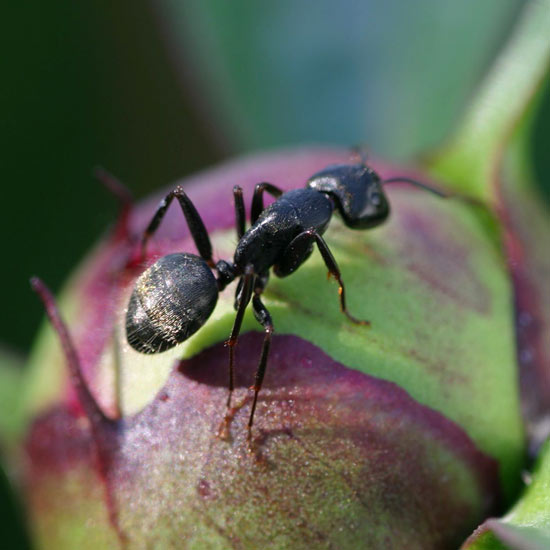






There are more than 400 species of ants in North America, but only a handful of those are really pests. Pavement ants are dark brown and very small, just 1/6 to 1/8 inch long. As their name suggests, pavement ants are often found under stone and in the cracks of concrete. They will eat anything people would. Pharaoh ants are about the same size but are light brown to yellow in color. They are notorious pests that like to make their nests in walls, under floors, and behind baseboards. Odorous house ants, so named for their odor when crushed, are brown-black and about the same size as pavement and pharaoh ants. They also will eat most any foods, especially those containing sugar. Indoors, they will often build nests near heat sources or in insulation.
continue reading belowCarpenter ants have a nastier reputation and can cause real damage. These large, 1/4- to 1-inch-long black ants like to build their nests in damp, dead wood. However, they do not eat it like termites do (so if you see them in a tree, you can guess the tree is rotting). They can cause damage to wood used in construction. They leave behind a telltale sawdustlike material called frass when building their nests, and that can give you a clue to their location.
Most gardeners have heard of the dreaded red fire ants. They have a painful sting, and their mound-building can damage plant roots.
When you see a single ant in the house, take time to remove it. They are called scouts and are sent out by the colony to look for new food sources. Once the scout finds food, it heads back to the colony, leaving a pheromone trial behind. Pheromone is a chemical used by animals to communicate. It acts as a trail to lead all the food-gathering ants back to the source. You will often see a whole convoy of ants following an exact path up a wall or across the floor. That means it's time to get cleaning.
Use a general-purpose household cleaner or a 50-50 mixture of vinegar and water to wash away the trail so ants can no longer be led back into your house. Bait such as Terro, a mixture of borax and sugar water, works well because the ants take the poison back to the colony, where it will spread and cause the colony to collapse. Even though bait is effective, especially in cases where the nest is hard to reach, prevention should not be overlooked. The ants are coming in to look for food, so keep everything in airtight containers. Keep the sink and counters clean, and use caulk to close up entryways. If the ants have found their way into your pet's food dish, try putting it into a wider, shallow dish filled with water. This will act as a barrier that the ants won't swim across.
Copyright © www.100flowers.win Botanic Garden All Rights Reserved